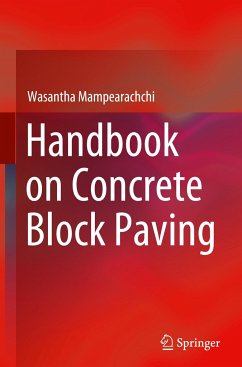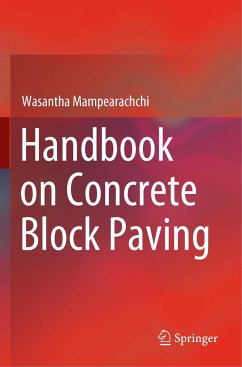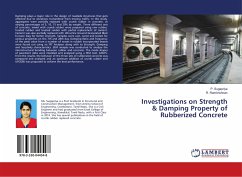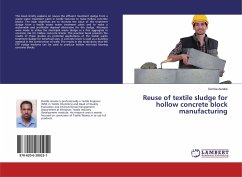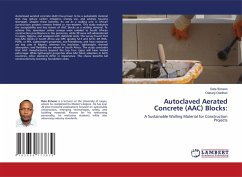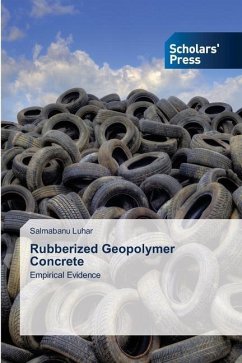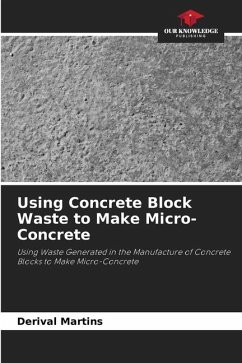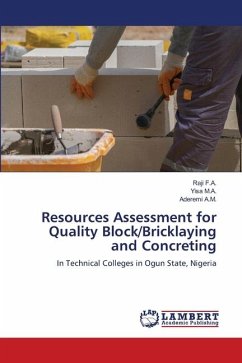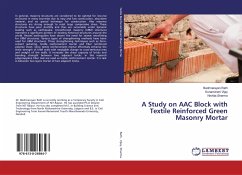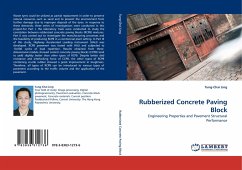
Rubberized Concrete Paving Block
Engineering Properties and Pavement Structural Performance
Versandkostenfrei!
Versandfertig in 6-10 Tagen
52,99 €
inkl. MwSt.

PAYBACK Punkte
26 °P sammeln!
Waste tyres could be utilized as partial replacement in order to preserve natural resources such as sand and to prevent the environment from further damage due to improper disposal of the tyres. In response to these demands, three series of investigations were conducted in this project.For Part I, the laboratory trials were conducted to study the correlation between rubberized concrete paving blocks (RCPB) mixtures. Part II was carried out to investigate the manufacturing processes and the feasibility of producing RCPB in a commercial plant setting. In Part III of this study, Highway Accelerat...
Waste tyres could be utilized as partial replacement in order to preserve natural resources such as sand and to prevent the environment from further damage due to improper disposal of the tyres. In response to these demands, three series of investigations were conducted in this project.For Part I, the laboratory trials were conducted to study the correlation between rubberized concrete paving blocks (RCPB) mixtures. Part II was carried out to investigate the manufacturing processes and the feasibility of producing RCPB in a commercial plant setting. In Part III of this study, Highway Accelerated Loading Instrument (HALI) was developed. RCPB pavement was tested with HALI and subjected to 10,000 cycles of load repetition. Results obtained from three-dimensional models showed control concrete paving blocks (CCPB) tend to yield slightly better than other types of RCPB. Despite better skid resistance and interlocking force of CCPB, the other types of RCPB containing crumb rubber showed a great improvement in toughness. Therefore, all types of RCPB can be introduced to various types of pavement according to the traffic volume and the application of the pavement.



